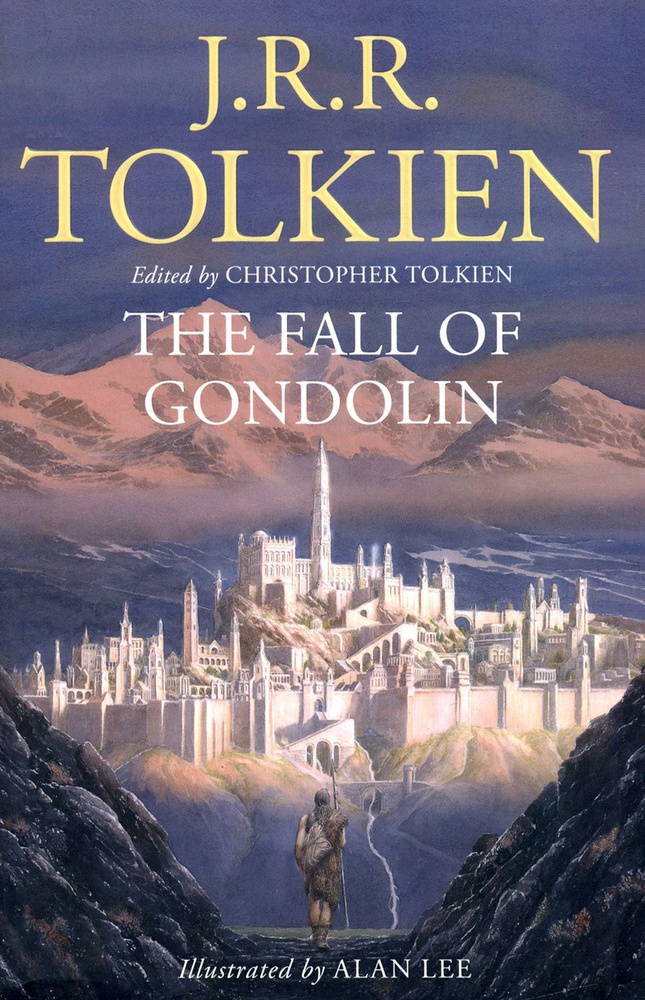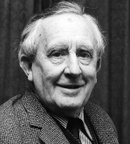- Книги
- Литература на иностранных языках
- Английский язык
- Художественная литература




−35%
Рассрочка 0-0-6
The Fall of Gondolin / Книга на Английском | Толкин Джон Рональд Ройл
Тип книги:
Другие издания
О товаре
Перейти к описанию
Издательство
Серия
Год выпуска
2020
Тип бумаги в книге
Офсетная
О книге
В «Падении Гондолина» признанный мастер фэнтезийного жанра Джон Рональд Руэл Толкин повествует о сокрушительном конфликте двух могучих сил. На одной из сторон – Моргот, воплощение зла, не участвующий
6 449 ₸ 9 929 ₸
Часто задаваемые вопросы
Описание
В «Падении Гондолина» признанный мастер фэнтезийного жанра Джон Рональд Руэл Толкин повествует о сокрушительном конфликте двух могучих сил. На одной из сторон – Моргот, воплощение зла, не участвующий в самой истории, но повелевающий огромным войском тьмы из своей крепости Ангбанд. Противостоит ему Ульмо, владыка вод и морей, второй по могуществу среди Валар.
В центре этого божественного противостояния находится прекрасный тайный город Гондолин. Он был построен и населён эльфами рода Нолдор, бежавшими в Средиземье из Валинора. Тёмный Властелин Моргот жаждет отыскать искусно укрытый город и убить его правителя, Тургона, которого ненавидит и боится. В это время в Валиноре гремит спор между богами, которые наотрез отказываются вмешиваться в конфликт вопреки просьбам Ульмо.
Тогда в повествовании появляется Туор, двоюродный брат Турина Турамбара. Он покидает свою родину ради опасного путешествия в Гондолин и во время океанского шторма встречает Ульмо, который является ему прямо из глубины и нарекает своим посланником. В Гондолине Туор обретает величие. Он женится на Идрили, дочери Тургона. Их сына Эарендила, по предвидению Ульмо, ожидает великое предназначение.
Наконец, приходит пора трагической концовки. Предатель показывает Морготу путь к тайному городу и вскоре под его стенами появляется войско из балрогов, драконов и бесчисленных орков. Величественному городу не суждено выстоять, и сказание оканчивается побегом Туора, Идрили и маленького Эарендила. Покинув горящий Гондолин, они движутся на юг, где должна развернуться новая история – «Сказание об Эарендиле», которое Толкин так и не написал.
Издание одного из трёх «Великих сказаний» Первой Эпохи Арды от автора «Властелина Колец» и «Хоббита» станет великолепным подарком поклонникам жанра фэнтези. Издание в футляре, на составном переплёте спереди – тиснённое золотом изображение.
Книга на английском языке.
Painstakingly restored from Tolkien's manuscripts and presented for the first time as a standalone work, the epic tale of The Fall of Gondolin will reunite fans of The Hobbit and The Lord of the Rings with Elves and Men, Balrogs, Dragons and Orcs and the rich landscape and creatures unique to Tolkien's Middle-earth.
In the Tale of The Fall of Gondolin are two of the greatest powers in the world. There is Morgoth of the uttermost evil, unseen in this story but ruling over a vast military power from his fortress of Angband. Deeply opposed to Morgoth is Ulmo, second in might only to Manwe, chief of the Valar.
Central to this enmity of the gods is the city of Gondolin, beautiful but undiscoverable. It was built and peopled by Noldorin Elves who, when they dwelt in Valinor, the land of the gods, rebelled against their rule and fled to Middle-earth. Turgon King of Gondolin is hated and feared above all his enemies by Morgoth, who seeks in vain to discover the marvellously hidden city, while the gods in Valinor in heated debate largely refuse to intervene in support of Ulmo's desires and designs.
Into this world comes Tuor, cousin of Turin, the instrument of Ulmo's designs. Guided unseen by him Tuor sets out from the land of his birth on the fearful journey to Gondolin, and in one of the most arresting moments in the history of Middle-earth the sea-god himself appears to him, rising out of the ocean in the midst of a storm. In Gondolin he becomes great; he is wedded to Idril, Turgon's daughter, and their son is Earendel, whose birth and profound importance in days to come is foreseen by Ulmo.
At last comes the terrible ending. Morgoth learns through an act of supreme treachery all that he needs to mount a devastating attack on the city, with Balrogs and dragons and numberless Orcs. After a minutely observed account of the fall of Gondolin, the tale ends with the escape of Tuor and Idril, with the child Earendel, looking back from a cleft in the mountains as they flee southward, at the blazing wreckage of their city. They were journeying into a new story, the Tale of Earendel, which Tolkien never wrote, but which is sketched out in this book from other sources.
Following his presentation of Beren and Luthien Christopher Tolkien has used the same 'history in sequence' mode in the writing of this edition of The Fall of Gondolin. In the words of J.R.R. Tolkien, it was 'the first real story of this imaginary world' and, together with Beren and Luthien and The Children of Hurin, he regarded it as one of the three 'Great Tales' of the Elder Days.
Тематика: Классическая зарубежная проза на английском языке
Автор на обложке
Tolkien John Ronald Reuel
- Артикул
- 1456901033
- Издательство
- HarperCollins
- Серия
- Нет серии
- Год выпуска
- 2020
- Тип бумаги в книге
- Офсетная
- Тип обложки
- Мягкая обложка
- Тип книги
- Книга на иностранном языке
- Язык издания
- Английский
- Количество страниц
- 304
- Размеры, мм
- 197x128x25
- ISBN
- 9785000000000
- Возрастные ограничения
- 16+
- Основной жанр книги
- Художественная литература
- Иллюстратор
- Lee Alan
Подборки товаров в категории Художественная литература на английском языке
Отзывы о товаре
0
The Fall of Gondolin / Книга на Английском | Толкин Джон Рональд Ройл
Нет оценок
Вопросы и ответы 0
Как правильно задавать вопросы?
Будьте вежливы и спрашивайте о товаре, на карточке которого вы находитесь
Если вы обнаружили ошибку в описанием товара, воспользуйтесь функцией
Как отвечать на вопросы?
Отвечать на вопросы могут клиенты, купившие товар, и официальные представители.
Выбрать «Лучший ответ» может только автор вопроса, если именно этот ответ ему помог.





